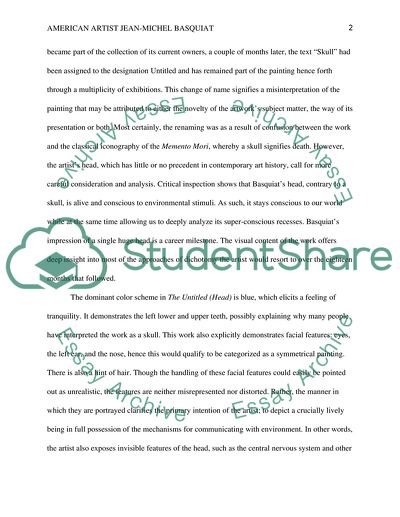Cite this document
(“American Artist Jean-Michel Basquiat Essay Example | Topics and Well Written Essays - 1750 words”, n.d.)
American Artist Jean-Michel Basquiat Essay Example | Topics and Well Written Essays - 1750 words. Retrieved from https://studentshare.org/visual-arts-film-studies/1462315-american-artist-jean-michel-basquiat
American Artist Jean-Michel Basquiat Essay Example | Topics and Well Written Essays - 1750 words. Retrieved from https://studentshare.org/visual-arts-film-studies/1462315-american-artist-jean-michel-basquiat
(American Artist Jean-Michel Basquiat Essay Example | Topics and Well Written Essays - 1750 Words)
American Artist Jean-Michel Basquiat Essay Example | Topics and Well Written Essays - 1750 Words. https://studentshare.org/visual-arts-film-studies/1462315-american-artist-jean-michel-basquiat.
American Artist Jean-Michel Basquiat Essay Example | Topics and Well Written Essays - 1750 Words. https://studentshare.org/visual-arts-film-studies/1462315-american-artist-jean-michel-basquiat.
“American Artist Jean-Michel Basquiat Essay Example | Topics and Well Written Essays - 1750 Words”, n.d. https://studentshare.org/visual-arts-film-studies/1462315-american-artist-jean-michel-basquiat.


